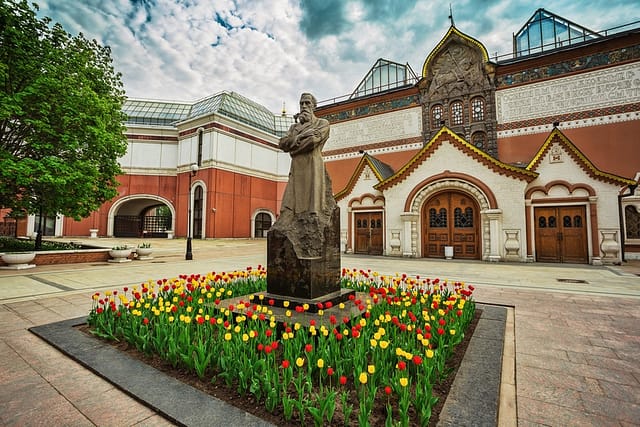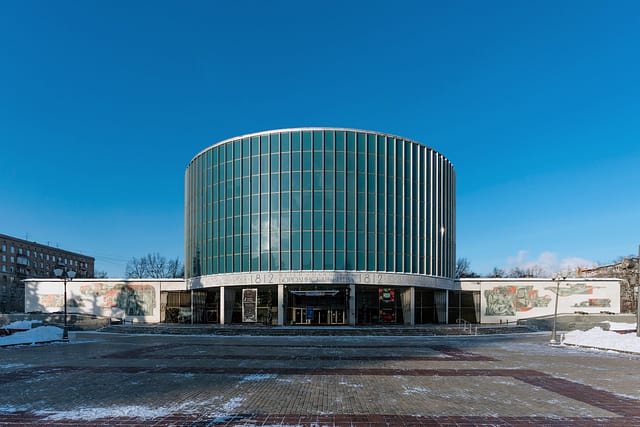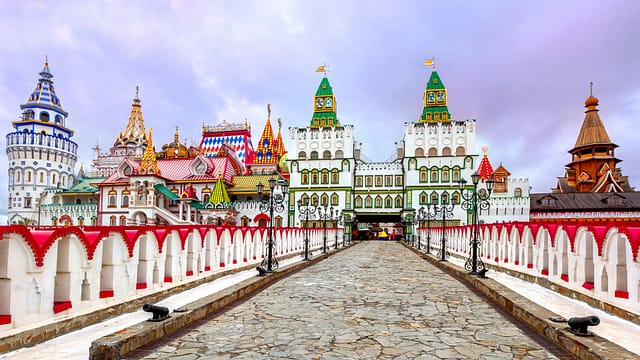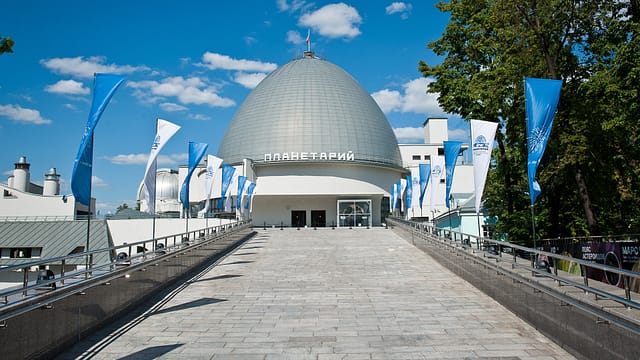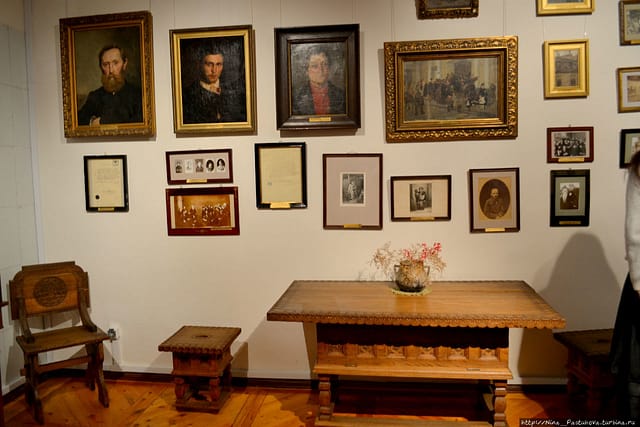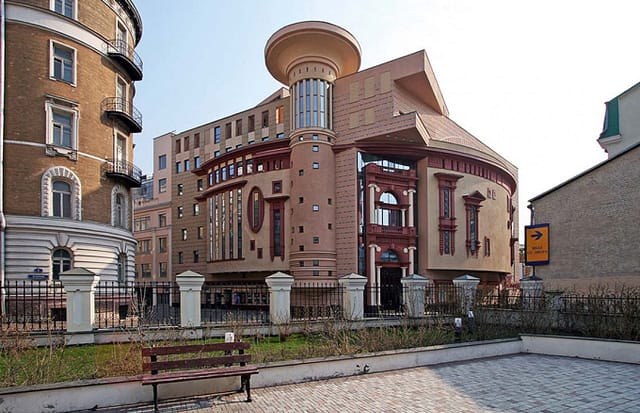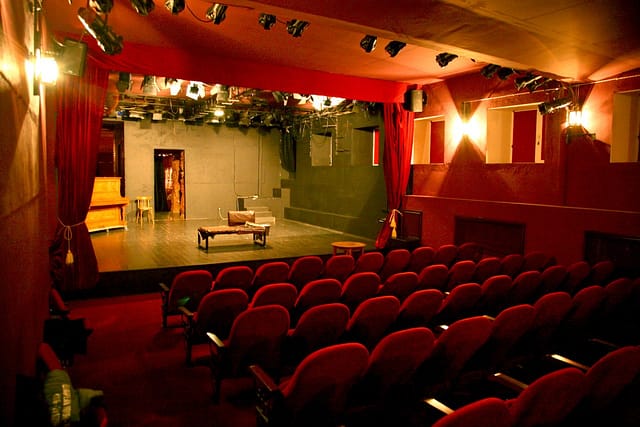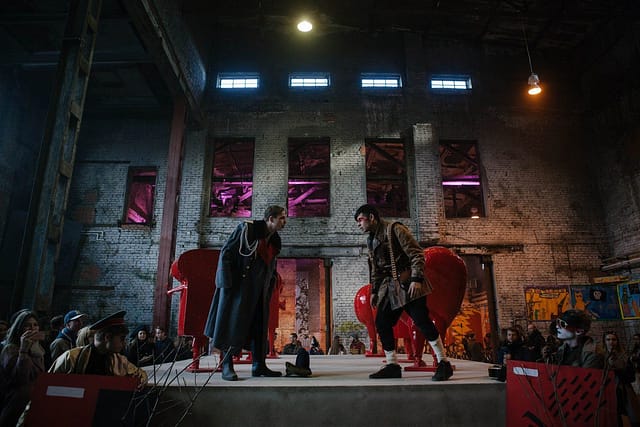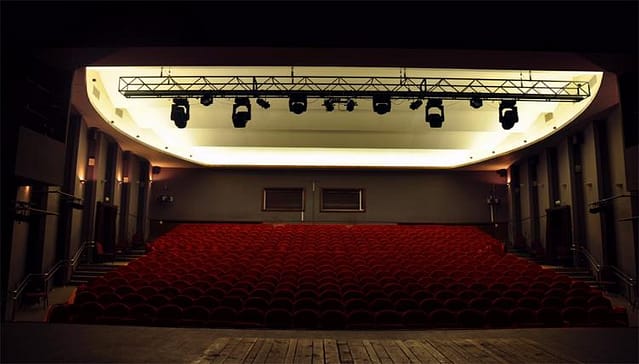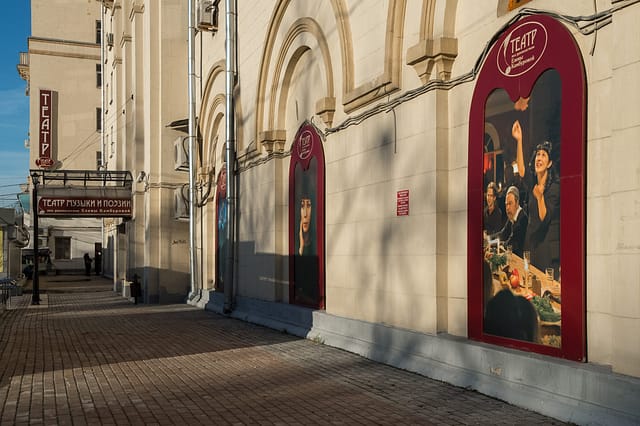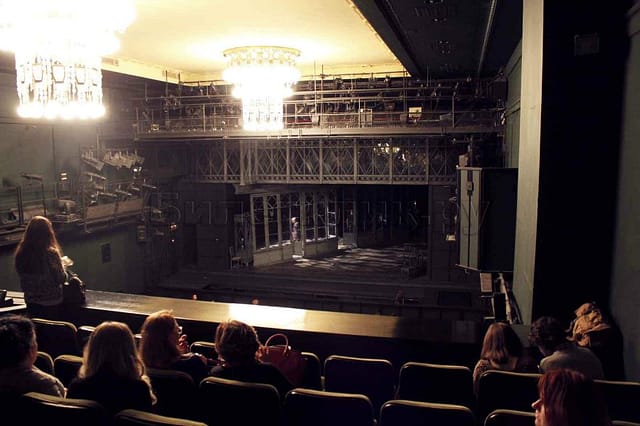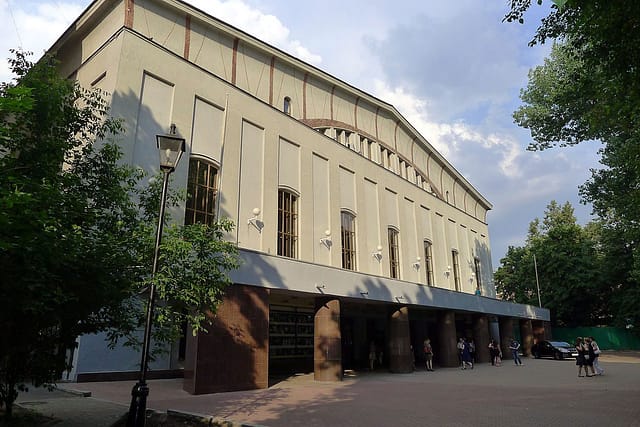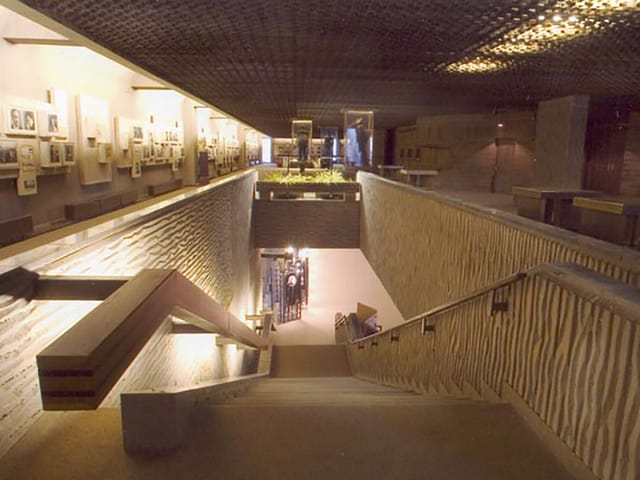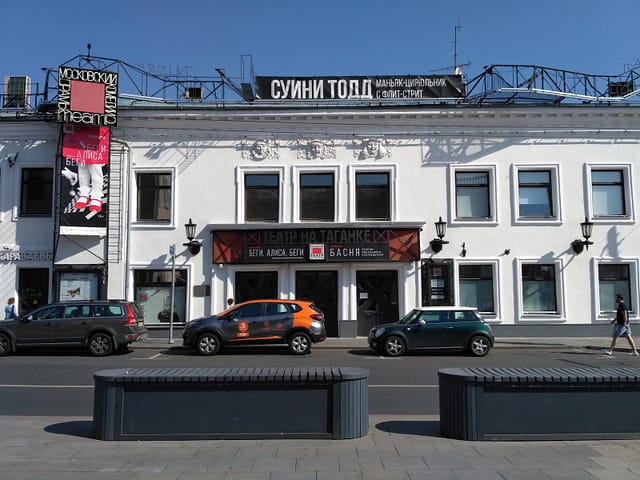Diamond fund
The Diamond Fund is a unique collection that has come a long way, closely connected with the history of the Russian state, and consists of masterpieces of jewelry of the XVIII-XX centuries, rare precious stones, insignia, nuggets of precious metals, which are of great historical, artistic, scientific and material value.
opening hours: mon, tue, wed, fri, sat, sun 10: 00–17: 20, break 13: 00–14: 00
Address: Kremlin, Russia, Moscow (State Armory Chamber)
Armouries
The Armory, a treasury museum, is part of the Grand Kremlin Palace complex. It is located in a building built in 1851 by the architect Konstantin Ton. The basis of the museum collection was the precious objects made in the Kremlin workshops and also received as a gift from the embassies of foreign countries for centuries kept in the tsar’s treasury and the patriarchal sacristy. The museum owes its name to one of the oldest Kremlin treasuries.
The Armory stores the ancient state regalia, the royal royal dress and coronation dress, the vestments of the hierarchs of the Russian Orthodox Church, the largest collection of gold and silver items made by Russian masters, Western European artistic silver, weapons masterpieces, a collection of carriages, items of parade horse furnishings.
The museum features about four thousand monuments of arts and crafts of Russia, Europe and the East IV – the beginning of the XX century. Their highest artistic level and special historical and cultural value have brought world renown to the Armory Chamber of the Moscow Kremlin.
Address: Manezhnaya st., 2-10soor2, Moscow
Opening hours: Mon, Tue, Wed, Fri, Sat, Sun 10: 00–16: 30
The Tretyakov Gallery
The Tretyakov Gallery is the main museum of national art in Russia, reflecting its unique contribution to world culture. This is a hospitable museum, known for its rich collection and variety of ideas presented.
Opening hours: Tue, Wed 10: 00–18: 00; Thu-Sat 10: 00–21: 00; Sun 10: 00–18: 00
Guides and accredited guides and interpreters can conduct guided tours only.
Address: Lavrushinsky per. 10, Moscow
Panorama Museum of the Battle of Borodino
Historical Museum in Moscow, dedicated to the Patriotic War of 1812. The collection of the museum includes a panorama of the battle of Borodino by the artist Franz Roubaud, collections of paintings, drawings, sculptures, decorative arts and rare books, a numismatic collection and items of equipment and weapons.
Opening hours: Mon-Wed 10: 00–18: 00; Thu 10: 00–21: 00; Sat, Sun 10: 00–18: 00
Address: Kutuzovsky Ave., 38, p. 1, Moscow
Bunker-42
The military-historical museum and entertainment complex in Moscow in the 5th Kotelnichesky lane near the Taganskaya metro station. Founded in 2006. Located in an underground bunker with an area of more than 7,000 m² at a depth of 65 meters on the territory of the former secret military facility of the USSR – Reserve command center of long-range aviation.
Opening hours: daily, 10: 00–21: 00
Address: 5th Kotelnichesky Lane, 11, Moscow
The museum of cosmonautics
The museum is accommodated in the stilobate of the monument “To Conquerors of space” which is one of the most famous monument in Moscow. The museum of cosmonautics was solemnly opened on April 10, 1981, in commemoration of the 20th anniversary of the first space flight performed by the inhabitant of the Earth – Yu. Gagarin. The idea of creation of the museum belongs to S. Korolev , the Chief Designer of the space – rocket systems. S. Korolev who designed the rockets and spacecraft was aware of the role played by them in the development of the world science and engineering, and he could not ignore the problem of preservation of the scientific – technical heritage. Now the museum is conducting a great reconstruction. A new museum complex in the capital of great space power will reflect the real history of space achievements, based on scientific facts and with the help of modern museum technologies. In special zones it is planned to install interactive exhibits similar to those of Gagarin Cosmonauts Training Center. With the help of such devices our visitors will be able to feel themselves as real cosmonauts on board the spaceship “Soyuz” or International Space station.
Opening hours: Tue, Wed 10: 00–19: 00; Thu 10: 00–21: 00; Fri 10: 00–19: 00; Sat 10: 00–21: 00; Sun 10: 00–19: 00
Address: 129515, Moscow, 111, pr. Mira
Kremlin in Izmailovo
Cultural and entertainment complex, built in 1998-2007 on the territory of the Izmailovo estate. It is a wooden buildings, stylized under the Russian architecture of the XVI-XVII centuries. As of 2018, the Kremlin in Izmailovo consists of eight museums and exhibition venues: the Museum of Russian Folk Toys, the Museum of the Foundation of the Russian Fleet, the Museum of History of Russian Vodka, the Bread Museum, the Museum of Miniatures “World History in Clay”, the Club – Museum – Lectory Traditional Masks and Figures of the World, Moscow Museum of Animation, as well as the exhibition “Japan. Dolls, fairy tales, legends ”
opening hours: daily, 8: 00–20: 00
Address: Izmaylovskoye sh. 73ZH, Moscow
State Historical Museum
The unmissable red-brick palace with its silver roof, towering opposite St. Basil’s Cathedral in Red Square, houses the State Historical Museum which is one of the main sightseeing attractions of the Russian capital. Designed by V.Shervud, this Museum was built to commemorate national history, and traces the development of Russia and its people from ancient times to the present.
Schedule: From September 1 to May 31:
Monday – Sunday: 10: 00–18: 00
Friday, Saturday: 10: 00–21: 00
Tuesday – day off
Address: 109012, Moscow, Red Square, 1
Mosfilm Museum
The Mosfilm Cinema Concern Museum is a corner of the legendary film studio where many domestic films are shot and continue to be made. The museum is unusual in that the exhibits in it are constantly changing – some are sent to film, others return to the exhibition. There is also a unique collection of vintage cars participating in the Mosfilm films, actors’ costumes and wonderful scenery.
Opening hours: daily, 10: 00–18: 30
Address: Mosfilmovskaya st., 1, p. 21, Moscow
State Darwin Museum
Moscow Museum dedicated to the Darwinian theory of evolution. The initiator of the creation was the biologist Alexander Kots, who began his teaching career at the Moscow Higher Women’s Courses in 1907. The same year is also considered the date of foundation of the museum – the scientist transferred his collection of rare stuffed animals to the building of courses in Merzlyakovsky Lane. After the 1917 revolution, the Darwinian Museum became an independent institution. In 1994, the Moscow government allocated a building on Vavilova Street to the needs of the museum. As of 2018, the exposition includes 400,000 items.
Opening hours: Tue, Wed 10: 00–18: 00; Thu 10: 00–21: 00; Fri-Sun 10: 00–18: 00
Address: st. Vavilova, 57, Moscow
Moscow Planetarium
The Moscow planetarium is one of the largest in the world and the oldest planetarium in Russia. Located in Moscow near the new territory of the Moscow Zoo, not far from the Garden Ring. Built in 1927-1929 by the project of architects M. O. Barshch, M. I. Sinyavsky and engineer G. A. Zundblat.
At the time of opening, the Moscow Planetarium was the only one in the country, the thirteenth in the world and Europe.
The main activity of the Moscow Planetarium is the popularization of natural science knowledge.
The Moscow Observatory is located in the Moscow Planetarium, from which you can observe various space objects.
Hours: Mon, Wed, Thu, Fri, Sat, Sun 10: 00–21: 00
Address: Sadovaya-Kudrinskaya Str., 5, bld. 1, Moscow
Central Museum of the Air Force
Central Museum of the air force created in 1958.
In the collections of the Museum contain domestic and foreign aircrafts of military, special and civil purpose. Many Museum exhibits are unique, available in single copies. The collection is organised by the creators of the design Bureau and authors, as well as by year of creation and purpose. In addition there are a collection of aircraft engines, aviation armament, screws, models of aircraft, uniforms, ground equipment, documents and photographs.
The Museum’s collection gives an idea about the history of development of aviation of Russia from its beginnings to the present day and its modern condition
Opening hours: Wed-Sat 9: 00–19: 00; Sun 9: 00–18: 00
Address: 141170, Moscow region, Schelkovsky district, pos. Monino, st. Museum, 1
Directions: From Moscow: by electric train from the railway station “Moscow Yaroslavskaya” to the railway station “Monino”; from art. m. “Schelkovskaya” – auth. No. 362, from art. m. “Guerrilla” – auth. No. 322, from art. m. “Perovo” – march. Taxi No. 587. By car along the Volga highway.
The State A.S. Pushkin Museum
The State A.S. Pushkin Museum is the first museum in Moscow that is dedicated to the life and the creativity work of the famous Russian poet Alexander Sergeevich Pushkin. The museum complex was founded in 1957 on the territory of the former urban mansion belonged to the family Khruschev-Selezniov on the street Prechistenka 12/2. After its reconstruction and restoration in 1997 it became a modern multifunctional cultural center with 300 visitors annually. In the halls of the main mansion building the exposition “Pushkin and his epoch” is situated. The collection of the museum numbers more than 165 thousands of museum items (including items from the scientific-subsidiary fund). Art works of world significance, for example, works of Tropinin, Kiprensky, Brullov, Petrov-Vodkin, Korovin and others of the 19 – 20th centuries are displayed there.
The system of open storage is developed in the State A.S.Pushkin Museum. Annually the museum implements about dozens of exhibition projects, holds about 100 concert programmes, literary lecturing, international scientific conferences and seminars. One of its particular activities is the work with children audience. There are a lot of interactive programmes, membership tickets, theatrical and museum projects, New Year balls for children.
The State A.S.Pushkin Museum has several affiliates: “A.S.Pushkin Memorial Apartment in Arbat Street” (Arbat str., 53), “Andrey Beliy Memorial Apartment” (Arbat str., 55), memorial “I.S. Turgenev House-Museum” (Ostozhenka str., 37), “V.L.Pushkin House-Museum” (Staraya Basmannaya str., 36. On restoration now). Also the museum complex includes exhibition halls on Arbat street, where exhibitions of modern artists are held
Opening hours: Tue, Wed 10: 00–18: 00; Thu 13: 00–21: 00; Fri-Sun 10: 00–18: 00
Address: st. Prechistenka, 12/2, p. 1, Moscow
Memorial House-Museum of Vasnetsov V.M.
House of Artists Viktor Mikhailovich Vasnetsov (1848–1926), built on the author’s sketches and drawings. Muscovites affectionately call this house “Teremok” for its rich decor in the neo-Russian style. The museum reflects the special creative atmosphere that has developed around Vasnetsov: representatives of the Moscow artistic intelligentsia often gathered in the living room of the house. Part of the furniture in the interiors of the museum is made according to Viktor Mikhailovich’s sketches, and the workshop presents works on fairy-tale themes, called the poem of seven tales by the artist.
Opening hours: Wed-Sun 10: 00–17: 00
Address: Per. Vasnetsov, 13, p. 1, Moscow
Theaters
Grand Theater
Today, the Grand Theatre is one of the largest and most recognizable not only in Russia, but also one of the most significant theaters in the world. It has been operating since 1776 on the initiative of Empress Catherine II. Until now, it remains one of the most magnificent theaters. This made it possible to put most of the works of composers such as Wagner and Strauss.
Address: Moscow, Theater Square, 1
Et Cetera
According to the creators, the EtCetera theater appeared back in 1990. However, he acquired his own building and, accordingly, the opportunity to conduct regular productions, only six years later – in 1996. Well, in 2002, a new building was specially built for the theater, in which they have been successfully working for over ten years. Many theater lovers tend to buy tickets to the EtCetera Theater primarily because of the rich repertoire.
Here you can see the tragedy and comedy, children’s fairy tale and social fiction. Therefore, every spectator who has visited the EtCetera theater will be able to find here something for himself by discovering new facets of art.
Address: Moscow, Frolov per., 2.
Bulgakov Theater
The Bulgakov Theater belongs to the category of the youngest theaters. It was founded in 2011 under the project “Bulgakov House” and is located directly under the museum room. His discovery was timed to the birthday of the most mysterious author M. Bulgakov. It was on the opening day on the stage of the new theater that the “Master and Margarita” was staged, which won the hearts of the visitors.
Today, the theater them. Bulgakov pleases the audience with interesting performances that captivate the public and make it return again and again to this theatrical site. Not only popular actors play on stage, children and graduates of theater universities, who are not yet known to the public, play a special role. Despite the fact that the basis of the repertoire of the theater consists of performances based on the works of Bulgakov, it will also be interesting for small audiences
Address: Bolshaya Sadovaya Street 10
Vakhtangov Theater
Theater them. E. Vakhtangov is one of the best theaters of the capital. It originates from 1914, when a group of Moscow young students, enthusiastic and interested in the Stanislavsky system, decide to organize a student drama studio. E. Vakhtangov agreed to be the head of the group, since from early childhood he had dreamed of his own theater. In 1921, the first performance of “The Miracle of St. Anthony”, “in the cloths,” was released, at that time it was fashionable.
Address: Moscow, st. Arbat, 26
Gogol Center
The Gogol Center is a unique theater that combines not only theatrical platforms, but also concert scenes, a library, a cinema, discussion platforms … Having entered it, everyone will plunge into the world of art, plunge into the mysterious atmosphere of the surrounding space. Music concerts are held here, all sorts of performances by famous European and Russian directors are staged, you can come here and just read the works of your favorite writers, having received an access code to the media library on the passport. And if there is a desire to watch a movie that has not reached the Russian distribution, then Gogol Cinema opens its doors.
Gogol Center allows you to experience all the subtleties of modern art. The theater does not limit itself to any genre framework, which gives it a special flavor. In Gogol-center there are popular dance and theater teams – “The Seventh Studio”, “Dialogue Dance”, as well as the studio SounDrama, which always guarantees success when showing any production.
Address: Moscow ul.Kazakova, d.8
Jigarkhanyan Theater
The Armen Dzhigarkhanyan Theater began its activities on March 12, 1996 and was originally called the D Theater. The first troupe consisted of graduates of VGIK, headed by Armen Dzhigarkhanyan himself. The theater initially had a small room and an auditorium designed for 96 seats. The first performance of the theater was A. Jigarkhanyan’s mono-play “Krapp’s Last Tape”. Thanks to a non-standard creative approach, the wisdom of the director and the enthusiasm of the actors, the theater quickly gains its popularity and becomes one of the most visited theaters in Moscow, despite its youth.
Address: Moscow, Lomonosov Ave., 17
Yermolov Theater
Drama Theater. M.N. Yermolova is named after the legendary and talented actress of the Maly Theater, her work is captured in the pages of the history of great acting skills. Stanislavsky said that “M.N.Ermolova is the greatest of all the actors he saw.” Until now, in the foyer of the theater, a portrait of Maria Nikolaevna Yermolova appears before the audience.
Address: Moscow, st. Tverskaya, 5/6
Kamburova Theater
The Theater of Music and Poetry was founded by Elena Kamburova, in 1992 in a modest building on ul. Pirogovskaya. The basis of tetra are three components that can not be divided in any way, according to E. Kamburova, this is text, music and a dramatic beginning. Initially, the theater was created as a platform for performances and concerts of students and graduates of the theater. But today, the theater is a cozy house, which brought together like-minded people, songwriters, musicians, performers. For Elena Kamburova, “a song is a living creature flying in time and space.”Premieres at the Theater of Music and Poetry always gather their public. After all, solitude, poetry, melody, and dramatic vocals are found here.
Address: Moscow, st. Pirogovskaya Big 53/55
Theater Lenkom
The Lenkom Theater began its activities in 1927 with the Youth Workers’ Theater (TRAM) at the initiative of the Moscow Komsomol. At this time, the theater was characterized by the features of a classical theater, at the head of the literary part was Mikhail Bulgakov, Isaac Dunaevskaya directed the musical part, acting skills – Nikolai Batalov, and dancing – Natalia Gran. The first plays were staged in 1928 (“Green Lights”, “Call Fabkom”), and in 1929 (“Give Five”). As a result of this success, the theater in 1931 acquired the status of a professional theater.
Address: Moscow, st. Dmitrovka Malaya, 6
Mayakovsky Theater
Moscow Academic Theater im.Vl. Mayakovsky began his activities from October 26, 1922. The theater was created on the basis of the already disbanded Theater of Revolutionary Satire. Part of the artists from the disbanded theater became part of the troupe of the new theater. From its very birth until 1943, it was called the Theater of Revolution, from 1943-54 the Moscow Drama Theater, and only in 1964 the theater was given the worthy title Akademichesky.
Initially, the repertoire of the theater was based on various scenes, sketches, poems, and ditties in terms of genre. Moreover, the speeches were satirical, involving political themes.
Address: Moscow, st. B. Nikitskaya, 19
Theater Mossovet
The State Academic Theater of the Moscow Council began its long activity in 1923 and is one of the oldest theaters in the city of Moscow. The new name of the theater was in 1938. The theater houses two stages: “Under the Roof” and “Main”, on which not only the best but unforgettable performances are staged. The play “Jesus Christ is a superstar” is very popular. The motto of the theater has always been – “to preserve traditions, not giving up new artistic ideas!” In addition, in the courtyard of the theater is a picturesque garden “Aquarium”, where you can walk or just relax after the performance.
Address: Moscow, Preobrazhenskaya Sq., 12
Moscow Art Theater them. Gorky
Moscow Art Academic Theater. M. Gorky appeared in 1898 as a drama theater, created under the leadership of Vl. I. Nemirovich-Danchenko and K.S. Stanislavsky. Initially, the theater was named as “Artistically – Public”, but this name did not last long. Later, “Public” was removed from the title, despite the fact that the repertoire of the theater focused more on the democratic audience. In 1919, the theater was granted academic status. The new theater, named after the founder Maxim Gorky, appeared in 1987 after the division of the Art Theater into two theaters in the city of Moscow. Over the years, the theater has received a number of state awards.
Address: Moscow, Tverskoy Blvd., 22
Taganka Theater
The Moscow Theater of Drama and Comedy is a legendary theater, which began its offspring in 1964 on April 23 under the direction of Yuri Lyubimov, the main director, a graduate of the Schukin School. Striking with his courage, Yu. Lyubimov staged performances in a modern way, striking the audience of the 60s. Under the direction of Y. Lyubimov, a certain freedom was created in the theater, and changes were constantly taking place. Each performance in the theater was accompanied by music, dancing, singing, pantomime, indescribable emotions and even passion. And when staging performances were not used decorations, curtains. But, despite this, the Theater is becoming one of the most visited theaters in the city of Moscow.
Pushkin Theater
Moscow Drama Theater. A.S. Pushkin leads his history from the A.Ya.Tairov Chamber Theater. This is one of the most famous theaters in Moscow. The activity of the theater began on December 12, 1914. After 35 years, the Chamber Theater was closed, and A.Ya. Tairov was fired. In 1950, the Moscow Drama Theater was opened at this place. A.S. Pushkin.
The building, which houses the theater, has a history since the time of Catherine II.
Address: 23 Tverskoy Boulevard
RAMT
The Russian Academic Youth Theater begins its history in 1921. At that time, the theater was called the theater for children, and this was the first theater that staged children’s performances, and was located in the Ars cinema. Natalia Sats was the head of the theater, and Natalya Ilyinichna, People’s Artist of the USSR, was the director and artistic director until 1937. The first children’s play, which was staged by the theater, is the Pearl of Adalmina.
Fifteen years later, the theater received a new building on Theater Square, and was renamed the Central Children’s Theater. At the same time, a new performance “Sergei Streltsov” based on the play by Lyubimova was staged at the theater.
Address: Moscow, pl. Theater 2
Theater of the Russian Army
In the history of the theaters of our capital, the Central Academic Theater of the Russian Army occupies one of the leading places. The building occupied by the theater is a masterpiece of architecture that is nowhere else to be found. This is the largest stage area in Europe. The theater has a large and small hall, with a total capacity of almost 2,000 seats. The history of the theater itself began in 1930 with the Theater of the Red Army. In 1951, the theater was renamed the Theater of the Soviet Army, and only in 1993 the Theater of the Russian Army.
For more than ten years, a children’s studio has been working at the theater, where young artists are prepared for performances on the big stage and for film projects.
Address: Moscow, Suvorovskaya Square, 2



